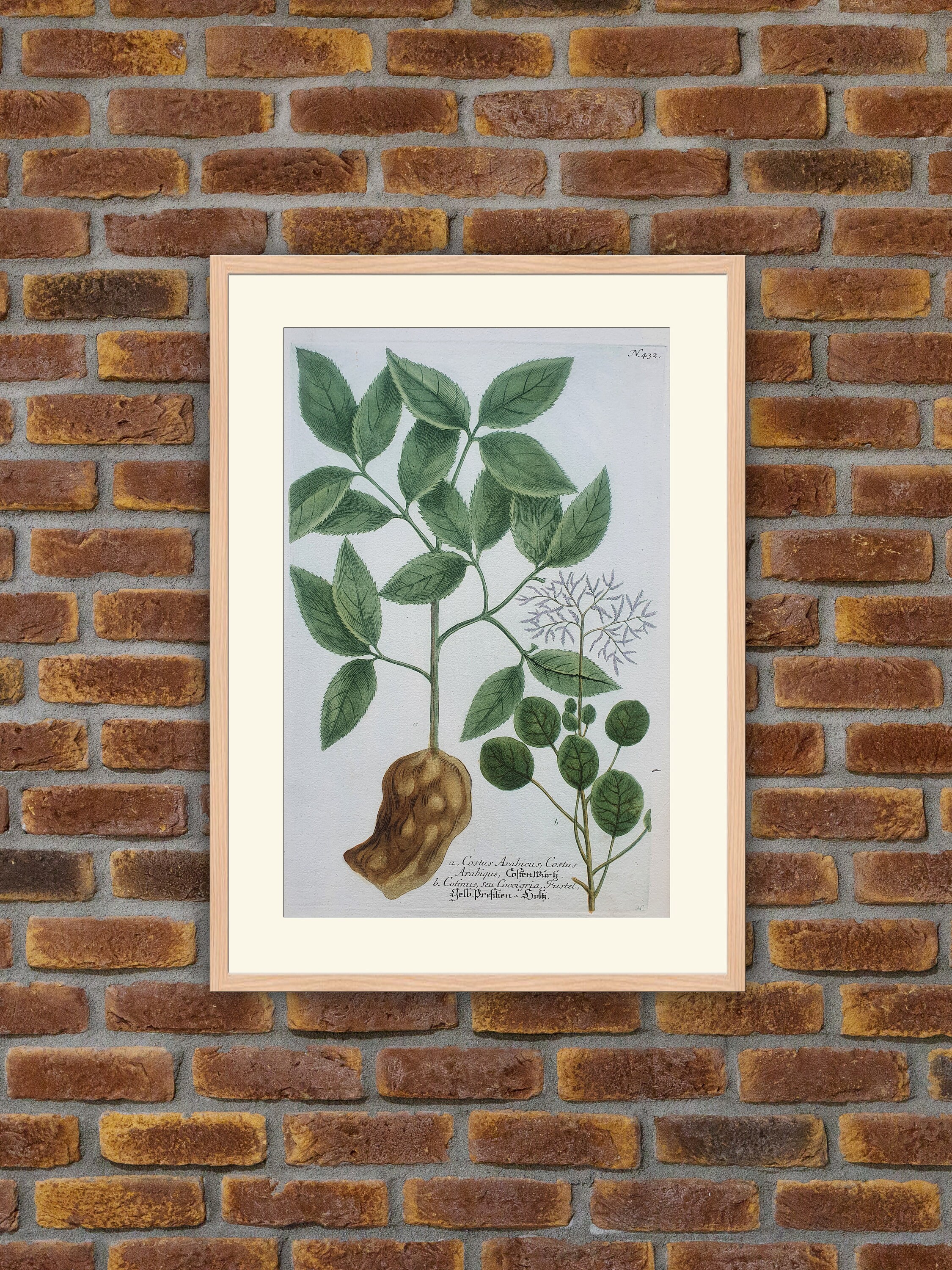Titre français : « Botanique de Weinmann : Costus Arabicus de Cotinus en couleur, gravure de 1739 » or « Costus Arabicus de Cotinus : Gravure couleur de Weinmann en 1739 (Botanique) »
Weinmann – Botanique Costus Arabicus, Cotinus Gravure Couleurs 1739
[Trouvé sur Etsy]
Title: Anne’s Blog: Discovering the Extraordinary World of Johann Weinmann and His Masterpiece, « Florilegium Phytanthoza Iconographia »
Hello, dear readers! Today, I invite you to embark on a fascinating journey into the world of Johann Weinmann, a German apothecary and botanist whose groundbreaking work left an indelible mark on the scientific community of the 18th century. We will explore Weinmann’s magnum opus, « Florilegium Phytanthoza Iconographia, » a monumental work that took 12 years to create and revolutionized the field of botanical illustration.
Johann Weinmann (1683-1741) was an exceptional figure in the scientific world of his time. Born in Koblenz, Germany, Weinmann began his career as an apothecary before developing a deep interest in botany. His greatest achievement, the « Florilegium Phytanthoza Iconographia, » is a testament to his dedication and curiosity.
This impressive work consists of eight volumes in folio format and over 1,000 meticulously graved plates. The text, which provides both scientific and therapeutic information, sparked a long-lasting controversy with local apothecaries and physicians. However, it is the plates that truly captivate our attention.
The 1,000 plates, each a work of art in its own right, represent a significant advancement in botanical illustration. Weinmann employed a new, revolutionary process using Mezzotinto engraving and hand-colored finishing with aquarelle. This innovative approach resulted in the first botanical work to be printed in color.
To ensure the technical aspect of the gravure was of the highest quality, Weinmann enlisted the expertise of renowned professionals such as Seutter and Ridinger. Their collaboration resulted in images of exceptional detail and precision. We strive to present you with high-quality images to allow you to fully appreciate every intricate detail.
It is essential that you examine each plate carefully to avoid missing any potential imperfections. I strongly encourage you to explore each plate in depth, taking your time to appreciate the beauty and intricacy of Weinmann’s work.
The « Florilegium Phytanthoza Iconographia » is not only an essential piece of botanical history, but it also showcases the artistic excellence of 18th-century illustration. Weinmann’s work represents a crucial bridge between scientific discovery and artistic expression.
As we delve deeper into the world of this extraordinary figure, we not only gain a newfound appreciation for the scientific advancements of the time but also come to appreciate the intricacies and beauty of the natural world. Stay tuned for more fascinating discoveries and insights as we continue to explore the world of Johann Weinmann and his remarkable legacy.
A bientôt,
Anne.
Mots-clés: Weinmann, apothicaire, botaniste, allemand, Florilegium Phytanthoza Iconographia, ouvrage, botanique, XVIIIème siècle, 12 ans, 8 volumes, in-folio, plus de 1000 planches, gravées, Mezzotinto, aquarelle, premier ouvrage imprimé en couleurs, indications scientifiques, thérapeutiques, dispute, apothicaires, médecins, graveurs, Seutter, Ridinger, haute qualité, détails, imperfections.
EUR82.50